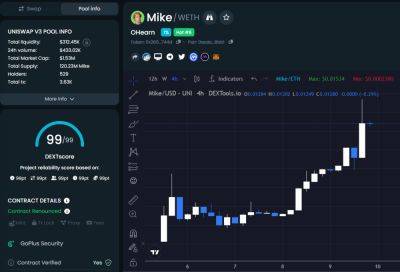Bitcoin Mining Set to Hit New Record High – What’s Driving the Surge?
The Bitcoin mining difficulty is about to be adjusted to a fresh record high, reflecting a continued rise in the number of mining machines competing to secure the network.
According to data presented by CoinWarz.com, the BTC mining difficulty will be lifted from its current level of 49.55 trillion to 50.91 trillion at tomorrow’s bi-weekly adjustment.
That means a more than 2.7% jump in the difficulty that individual miners face as they attempt to discover a Bitcoin block.
The jump in mining difficulty reflects the fact that, as per CoinWarz.com, the average block time is currently around 9.73 minutes, 0.27 minutes (or around 16.2 seconds) faster than the Bitcoin protocol’s aim of maintaining a block time of around 10 minutes.
Crypto on-chain data analytics firm Glassnode explains that the Bitcoin protocol “will adjust the difficulty up or down when the average observed block-intervals are shorter or longer (than 10 minutes), respectively”.
The surge in BTC mining difficulty goes hand-in-hand with a continued rally in the Bitcoin network’s hashrate (or overall computing power).
According to data presented by Glassnode, the 14-day moving average mean daily hash rate was last around 366 exahashes per second (EH/s) on Monday, a record high.
A surge in Bitcoin network fees this month has delivered a nice boost to Bitcoin mining profitability – miners not only get rewarded with newly issued BTC tokens when each block is mined, but they also get paid a share of network fees.
Behind the fee surge, which has admittedly eased in recent weeks although fees still remain at abnormal levels, is an explosion of activity on the Bitcoin blockchain related to the Ordinals protocol.
The Ordinals protocol, which pioneered the concept of inscriptions
Read more on cryptonews.com




















